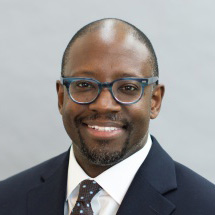 American Christians have a tendency to see their own denomination, local church, association of partner churches, and so on, as “the church.” With this reduction comes a number of blind spots about what the church looks like around the world.
American Christians have a tendency to see their own denomination, local church, association of partner churches, and so on, as “the church.” With this reduction comes a number of blind spots about what the church looks like around the world.
The Westminster Confession of Faith makes a distinction between the invisible church, those who have been or will be united to the Triune God by faith throughout the entire history of God’s people, and the visible church which is “catholic or universal under the Gospel (not confined to one nation, as before under the law), consists of all those throughout the world that profess the true religion: and of their children: and is the kingdom of the Lord Jesus Christ, the house and family of God, out of which there is no ordinary possibility of salvation.” The 1960 Manual of Church Doctrine according to the Church of Scotland also explains that “we who are alive represent in place and tie the whole which God alone sees in completeness. The great procession of the faithful crosses the world’s stage–and only such part of as is actually crossing that stage is visible; and it passes through the world.” As such, because the visible church is fully international already, American Christians have a wonderful opportunity to celebrate the flourishing of “the church” which is never simply about America nor the West.
While secular humanism continues to dominate the cultures of Western Europe and North America, the visible church is growing and expanding in ways that nicely represent the rich and ancient diversity of the people of God, which Pew Research estimates about 6.9 billion. Pew Research explains,
In 1910, about two-thirds of the world’s Christians lived in Europe, where the bulk of Christians had been for a millennium, according to historical estimates by the Center for the Study of Global Christianity. Today, only about a quarter of all Christians live in Europe (26%). A plurality – more than a third – now are in the Americas (37%). About one in every four Christians lives in sub-Saharan Africa (24%), and about one-in-eight is found in Asia and the Pacific (13%).
Almost half (48%) of all Christians live in the 10 countries with the largest number of Christians. Three of the top 10 countries are in the Americas (the United States, Brazil and Mexico). Two are in Europe (Russia and Germany), two are in the Asia-Pacific region (the Philippines and China), and three are in sub-Saharan Africa (Nigeria, Democratic Republic of the Congo and Ethiopia), reflecting Christianity’s global reach.
One of the reasons American Christians seem to often view the church as homogeneous is that we tend to operate too often in liked-minded ghettos. We fail to see what God is already accomplishing through the diversity represented in the visible, international church. One’s non-diverse local church or denomination does not warrant that “the church” is failing in this area, because no one church or denomination presents the church.
One of the great opportunities I have had recently to experience the diversity of the visible church has been by participating in Acton University. In 2013, for example, Acton University gathered God’s people from over 70 countries for dialogue, learning, and brainstorming together about what it means to love God and love neighbor as we explored the intellectual foundations of a free society. This is always eye-opening because in these contexts you see that Christianity is bigger than Western Europe and North America.
So, if an American Christian says to you that “the church” needs to be more diverse it is probably a sign that he or she may not have seen much of what God is doing in the world. If someone wants to get a glimpse of what the global visible church looks like, Acton University is a great place to start.
[product sku=”1236″]

